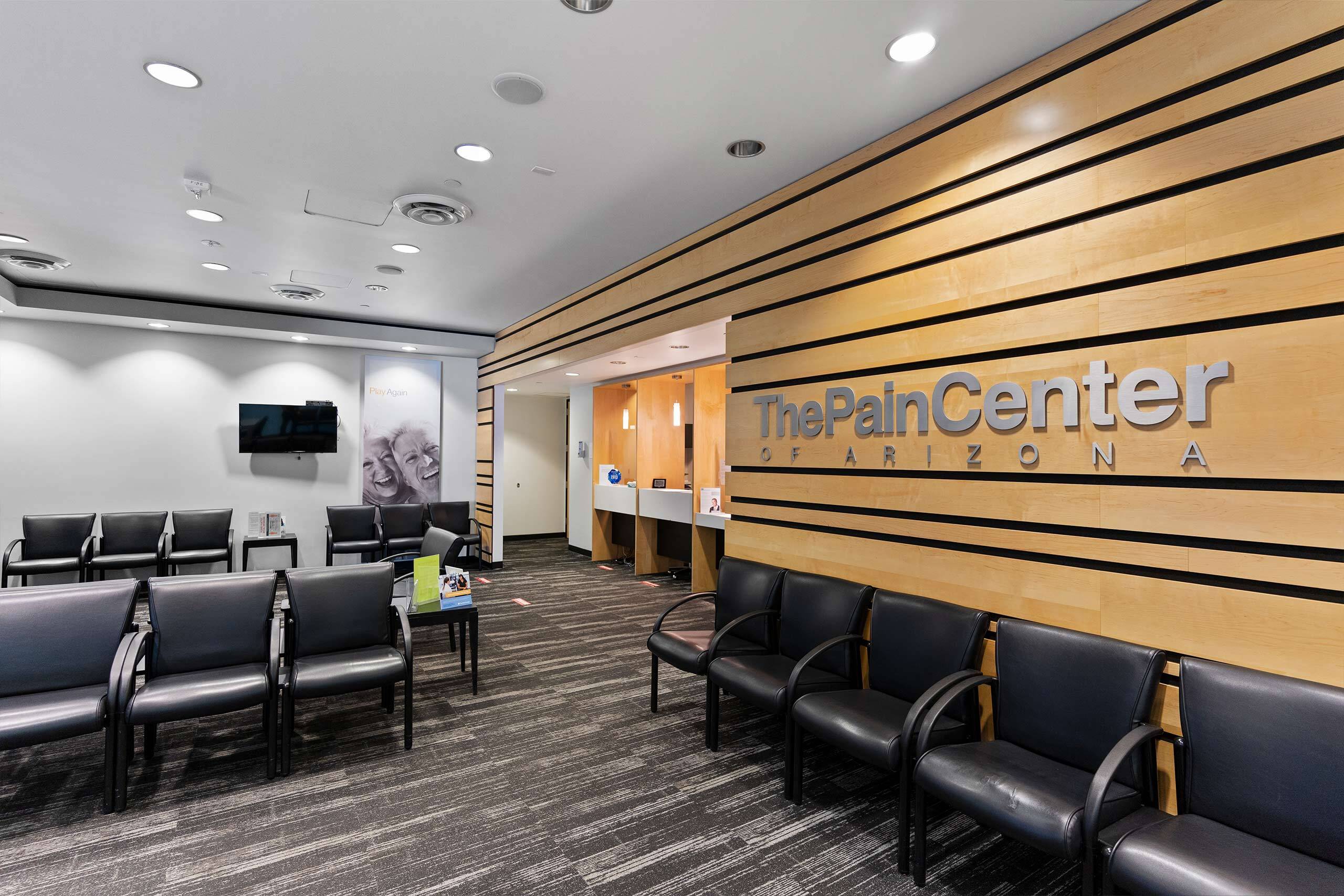Caudal Steroid Injection
A caudal steroid injection is a minimally invasive procedure that is administered through an opening in the sacrum, the triangular bone in the low back. The injection contains a combination of steroid medications and anesthetics to help decrease inflammation and pain of the low back, rectal or groin regions. A fluoroscope and contrast solution may be used during the procedure to ensure needle placement accuracy. Pain relief from a caudal steroid injection varies depending on the patient’s symptoms and condition, but individuals may experience several weeks or months of subsequent relief.

What is a Caudal Steroid Injection?
A caudal steroid injection is a minimally invasive procedure that is administered through an opening in the sacrum, the triangular bone in your lower back.
The injection contains a combination of steroid medications and anesthetics to help conditions, including:
- Sciatica or Radiculopathy
- Spondylosis
- Facet joint pain
- Spinal stenosis
- Herniated discs
- Post-laminectomy syndrome
- Degenerative disk disease
What Types of Pain Do Caudal Steroid Injections Treat?
Inflammation and pain of the lower back, rectum, groin, and legs.
How Does a Caudal Steroid Injection Work?
Your leg or back pain may be caused by the inflammation of spinal nerves running through the epidural space in your lower back. The steroid is used to minimize inflammation and decrease your overall lower back or leg pain.
A fluoroscope and contrast solution may be used during the procedure to ensure needle placement accuracy, giving you the best results from the medication.

Expectations and Recovery
The entire procedure typically takes only around 15-30 minutes.
You’ll be free to leave the same day as your procedure, but it’s recommended you avoid driving and any strenuous activity within 24 hours.
Barring any soreness you might experience from the injection itself, patients typically experience pain relief within 2-3 days.
Pain relief from a caudal steroid injection varies depending on the patient’s symptoms and condition, but individuals may experience several weeks or even months of subsequent relief.
What Symptoms of Back Pain Should I Watch Out For?
Acute back pain typically lasts up to three months, whereas chronic pain lasts longer. Report all your symptoms to your doctor, especially acute or chronic back pain symptoms such as:
- Muscle ache
- Shooting, stabbing, or dull pain
- Pain radiating toward the neck or down the legs
- Decreased range of motion and flexibility
- Pain reduction with rest or minimal movement
What Symptoms of Leg Pain Should I Report to My Doctor?
Be sure to inform your doctor of all your symptoms. Leg pain symptoms to watch out for include:
- Pain in either or both legs, with or without back pain
- Foot pain
- Sudden pain that comes and goes
- Redness or discoloration of the skin on either leg
- Swelling in the leg, ankle, or calf
- Distended veins
- Weakness
- Leg skin warm that’s warm to the touch
- Itching or throbbing skin
- Pain that worsens when walking, exercising
- Sciatica leg pain, or radiating pain down the back of the leg toward the feet
- Leg stiffness, general or morning
- Numbness, tingling, throbbing
- Muscle pain/aches
- Aching with or without fever
- Tenderness
- Burning sensation/pain
- Reduced range of motion
- Change in walking or movement due to pain (limping)
- Muscle cramps
- Achilles pain in your lower calf
For short-term back pain relief, ice, rest, and over-the-counter pain medications (at the recommended dosage) can temporarily ease your pain until long-term solutions are decided by your doctor.
Physical therapy is also a common treatment option and has the most clinical evidence of success for treating chronic back pain.


Get the care you need within 24 hours*
We know when you’re looking for relief for your chronic pain, you can’t wait any longer than you already have. This is why we can schedule you with an appointment within 24 hours at most of our pain centers across the Valley, so you can start your journey to life-long pain relief as soon as tomorrow.



